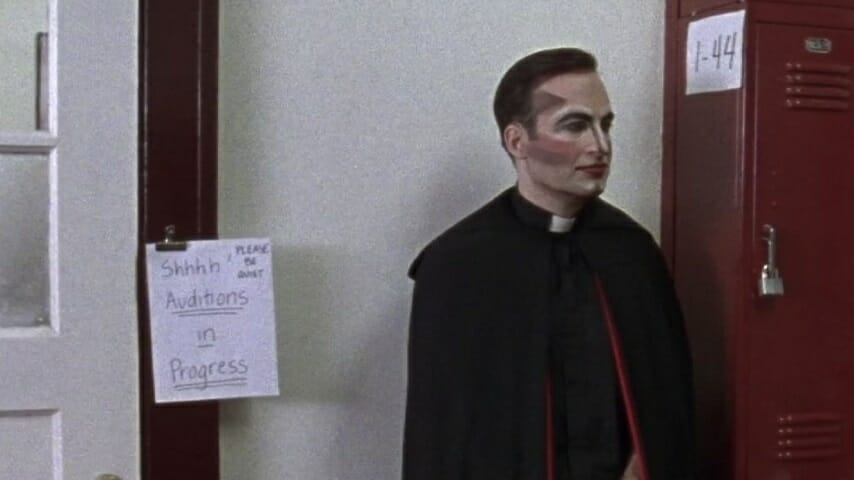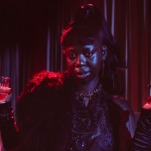A Tribute to Bob Odenkirk’s Unforgettable Performance in Waiting for Guffman
Screen cap from HBO Max
As the first film in Christopher Guest’s series of mockumentaries, Waiting for Guffman established what would become the core of Guest’s stock of repertory players. SCTV vets Eugene Levy and Catherine O’Hara, ‘90s indie It Girl Parker Posey, understated character actor Bob Balaban, comedian Larry Miller, supporting players Michael Hitchcock and Don Lake, and comedy legend Fred Willard all joined Guest in the director’s first four mockumentaries, reuniting every few years for such films as Best in Show and A Mighty Wind. That streak ended with 2016’s Mascots, which Miller missed, and which Levy and O’Hara had to skip due to the production schedule of Schitt’s Creek.
A few future Guest regulars aren’t in Guffman. There’s no Jane Lynch, no Jennifer Coolidge, no John Michael Higgins. Guest’s Spinal Tap bandmates Michael McKean and Harry Shearer co-wrote some of the movie’s songs, but neither appear on-screen. Jim Piddock and Ed Begley Jr. never show up. There are a few notable comedians who do make an appearance in Guffman who weren’t involved with any of Guest’s subsequent movies, though, and there’s one in particular who deserves special mention.
Yes, I’m talking about Bob Odenkirk, and his wordless two-second cameo as some kind of nail salon art vampire priest.
Odenkirk appears 11 minutes into the film, at the start of the audition montage. He’s standing quietly in the high school hallway outside the audition room wearing a cape, a priest’s collar, and makeup that makes him look like one of those ubiquitous nail salon posters that rip off Patrick Nagel’s artwork. Bob seems intent before his audition, a little nervous, but with the kind of obvious confidence his characters often have. He’s not officially credited, but IMDB lists his character’s name as “Caped Man at Auditions,” and the no-nonsense directness of that name evokes the plainspoken simplicity of Blaine, Missouri.
Our one glimpse of Bob comes as the camera pans over the acts waiting to audition for the play at the heart of Guffman’s plot. Off-screen a man sings Lou Christie’s “Lightnin’ Strikes” as we see a belly dancer and a woman in aerobic gear stretching in front of the lockers, while a show parent primps her young daughter’s clothes. A man in what looks like a straw hat and aloha shirt pushes a cart at the end of the hallway, while a woman with an acoustic guitar nervously chews on a thumb while staring over her shoulder at the audition room’s door. And then we see Bob, standing next to the row of lockers, his back against the wall, his eyes seemingly set on stardom, totally unmoved by the commotion around him—at first.
-

-

-

-

-

-

-

-

-

-

-

-

-

-

-

-

-

-

-

-

-

-

-

-

-

-

-

-

-

-

-

-

-

-

-

-

-

-

-

-








































